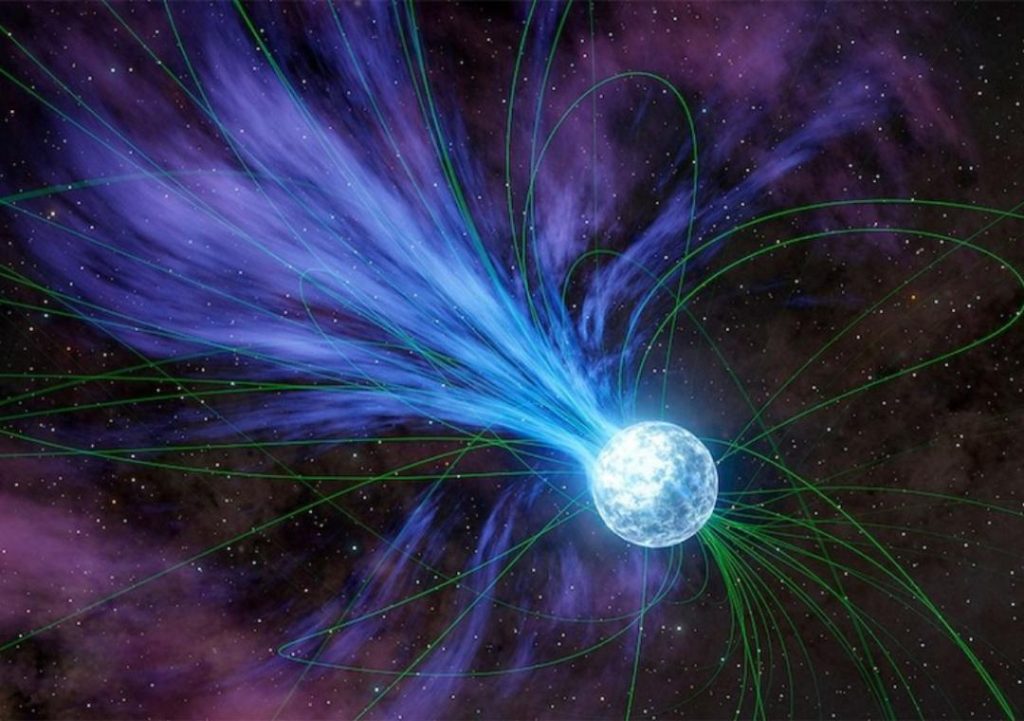
Gold & Platinum Created through Neutron Stars’ Explosions: Study
For centuries, humans have been fascinated by the origins of precious metals like gold and platinum. While theories have abounded, the exact mechanisms behind their creation have remained a mystery. However, a recent study led by Columbia University student Anirudh Patel has shed new light on the topic, suggesting that magnetars, or highly magnetized neutron stars, played a crucial role in the creation of these elements.
According to the study, magnetars exploded and released flares that contained significant amounts of gold and platinum, among other elements. This cosmic event, which occurred over 20 years ago, has provided scientists with a unique opportunity to study the formation of these precious metals.
Magnetars are incredibly powerful objects that are formed when a massive star undergoes a supernova explosion, leaving behind a dense remnant core. These cores are so dense that they have the density of a sugar cube that weighs as much as a mountain. Due to their intense magnetic fields, magnetars can release enormous amounts of energy in the form of flares, which can be detected from Earth.
The study, which was published in the journal Nature, used data from NASA’s Swift Gamma-Ray Burst Mission to analyze the light curves of magnetars. By studying the light curves, scientists were able to identify the presence of gold and platinum in the flares emitted by these objects.
“This is the first time we’ve been able to detect the presence of these elements in a magnetar flare,” said Dr. Patel, the lead author of the study. “The fact that we’re seeing these elements in a magnetar flare suggests that they were created through a process known as rapid neutron capture, or r-process nucleosynthesis.”
R-process nucleosynthesis is a process in which atomic nuclei are combined at incredibly high temperatures to form heavier elements. This process typically occurs in the hearts of stars, where temperatures can reach millions of degrees. However, magnetars provide a unique environment in which this process can occur, as their intense magnetic fields and high-energy radiation can create the conditions necessary for r-process nucleosynthesis.
The study’s findings have significant implications for our understanding of the origins of gold and platinum. For centuries, scientists have been puzzled by the scarcity of these elements in the universe, as they are not formed through the most common process of nucleosynthesis, known as s-process nucleosynthesis. The s-process is responsible for the formation of many elements, including iron, nickel, and copper, but it cannot produce the heavier elements like gold and platinum.
In contrast, r-process nucleosynthesis is believed to be responsible for the formation of many of the heaviest elements in the universe, including gold, platinum, and uranium. However, this process is relatively rare, occurring only in extreme environments like those found in magnetars.
The study’s findings also have implications for our understanding of the origins of the elements in our own solar system. While the Earth’s crust is rich in gold and platinum, these elements are relatively rare in the universe as a whole. The study’s suggestion that magnetars may have played a role in the creation of these elements suggests that our solar system may have formed in a region of the galaxy where magnetars were common.
The study’s findings have also sparked new interest in the study of magnetars, which are still poorly understood objects. While scientists have long known that magnetars are powerful objects, the study’s findings suggest that they may be even more important than previously thought.
“Magnetars are incredibly powerful objects that have the potential to shape the evolution of galaxies,” said Dr. Patel. “By studying these objects, we can gain a better understanding of the fundamental laws of physics that govern the universe.”
In conclusion, the study’s findings have provided a new and exciting perspective on the origins of gold and platinum. While the exact mechanisms behind their creation are still not fully understood, the study’s suggestion that magnetars may have played a role in their creation has significant implications for our understanding of the universe.
Further research is needed to fully understand the role of magnetars in the creation of these elements, but the study’s findings have already provided a new and exciting area of research for scientists to explore. As we continue to learn more about these incredible objects, we may uncover new and exciting secrets about the universe and our place within it.






